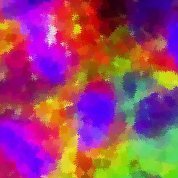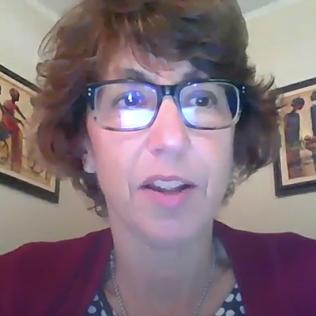
On the Cover
NIH scientists showed how ancient retroviral genes, or “junk DNA,” may play a role in helping stem cells decide to become neurons. The image shows stem cells in a petri dish. The blue dots represent cell nuclei. Green dots represent HERV-K, HML-2 viral envelope proteins encoded by junk DNA, while red dots represent the immune cell protein CD98HC. Interactions between the two proteins produced a yellow color. The study suggests that these interactions restrain stem cells from becoming neurons and that turning off HERV-K, HML-2 activity frees them.
NATH LAB, NINDS





